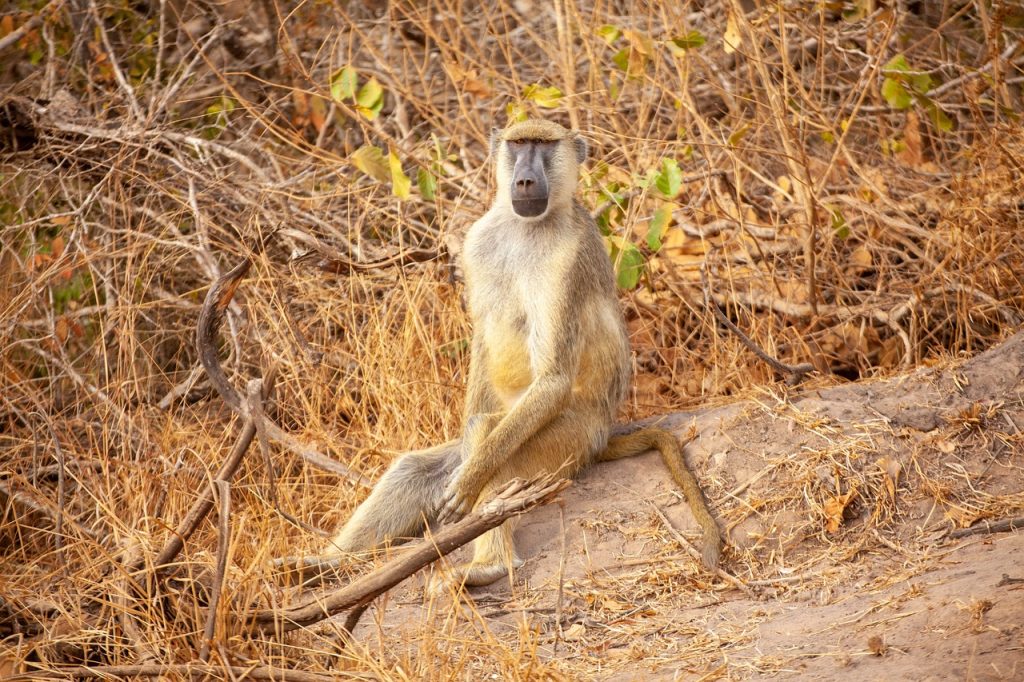Introduction
Tanzania, a country rich in biodiversity and natural beauty, is home to some of the most fascinating primates in the world, including chimpanzees and various species of monkeys. The lush forests, national parks, and protected areas of Tanzania offer a sanctuary for these intelligent and socially complex animals. This article delves into the lives, habitats, and behaviors of chimpanzees and monkeys in Tanzania, providing vivid examples and insights into their world.
Chimpanzees in Tanzania
Habitat and Distribution
Chimpanzees in Tanzania are primarily found in the western part of the country, with the largest populations residing in Gombe Stream National Park and Mahale Mountains National Park. Gombe, made famous by Dr. Jane Goodall’s groundbreaking research, offers a unique glimpse into the life of chimpanzees in their natural habitat. Mahale Mountains National Park, on the shores of Lake Tanganyika, provides another critical habitat for these great apes.
Social Structure and Behavior
Chimpanzees live in complex social groups known as communities, which can range from a few individuals to over a hundred. These communities are structured hierarchically, with dominant males, known as alpha males, exerting control and influence over the group.
Example: The Alpha Male of Gombe In Gombe Stream National Park, the alpha male, Frodo, demonstrated the intricate social dynamics of chimpanzees. Frodo’s rise to power involved both physical strength and strategic alliances, showcasing the chimpanzees’ ability to navigate complex social structures. His leadership was characterized by aggressive displays and the protection of group members, reflecting the dual nature of dominance and care in chimpanzee society.
Communication and Tool Use
Chimpanzees are known for their sophisticated communication systems, which include vocalizations, facial expressions, and gestures. They also exhibit remarkable tool-use behavior, such as using sticks to extract termites from mounds or stones to crack open nuts.
Example: Termite Fishing in Gombe In Gombe, researchers observed chimpanzees using sticks to fish for termites, a behavior passed down through generations. This tool use not only highlights their cognitive abilities but also their cultural transmission of knowledge, as young chimpanzees learn by observing and imitating older individuals.
Monkeys in Tanzania
Species and Habitat
Tanzania is home to a diverse array of monkey species, including colobus monkeys, vervet monkeys, and baboons. These primates inhabit various ecosystems, from the coastal forests of Zanzibar to the savannas of Serengeti National Park.
Colobus Monkeys
Colobus monkeys, particularly the black-and-white colobus, are a common sight in the forests of Tanzania. These arboreal primates are known for their striking black-and-white fur and their graceful leaping between trees.
Example: Colobus in Jozani Forest In the Jozani Chwaka Bay National Park on Zanzibar Island, black-and-white colobus monkeys can be seen leaping from tree to tree, their long tails providing balance. These monkeys play a crucial role in the ecosystem by aiding seed dispersal and maintaining forest health.
Vervet Monkeys
Vervet monkeys are widely distributed across Tanzania and are easily recognizable by their greenish-brown fur and distinctive black face. They are highly adaptable, thriving in various environments from woodlands to savannas.
Example: Vervet Monkeys in Serengeti In Serengeti National Park, vervet monkeys are often seen foraging for food and interacting with other wildlife. Their complex social systems and vocalizations serve as a key area of study for understanding primate behavior and communication.
Baboons
Baboons, particularly the olive baboon, are another prominent primate species in Tanzania. These ground-dwelling monkeys are known for their versatility and omnivorous diet.
Example: Baboons in Tarangire In Tarangire National Park, baboons can be observed in large troops, foraging for fruits, seeds, and small animals. Their social structure is matriarchal, with females playing a central role in group dynamics and raising offspring.
Conservation Efforts
Challenges
Despite their resilience, chimpanzees and monkeys in Tanzania face numerous threats, including habitat loss, poaching, and human-wildlife conflict. Deforestation for agriculture and settlements encroaches on their natural habitats, while illegal hunting poses a significant risk to their populations.
Initiatives
Various conservation initiatives are underway to protect these primates and their habitats. Organizations like the Jane Goodall Institute focus on research, education, and community-based conservation strategies to ensure the survival of chimpanzees and other primates.
Example: Community Conservation in Gombe In Gombe, the Jane Goodall Institute works closely with local communities to promote sustainable land-use practices and reduce human-wildlife conflict. By involving local people in conservation efforts, these initiatives help foster a sense of stewardship and ensure the long-term protection of primate habitats.
Conclusion
The chimpanzees and monkeys of Tanzania offer a captivating glimpse into the lives of some of our closest relatives in the animal kingdom. From the tool-using chimpanzees of Gombe to the agile colobus monkeys of Zanzibar, these primates enrich Tanzania’s biodiversity and highlight the importance of conservation efforts. Through continued research and community engagement, we can ensure that these remarkable creatures continue to thrive in their natural habitats for generations to come.







